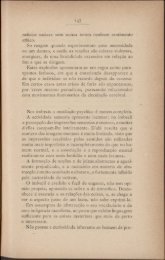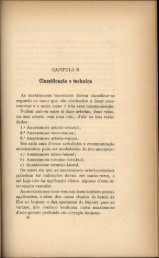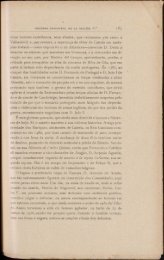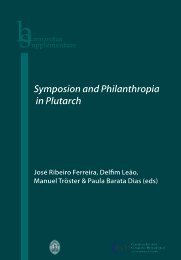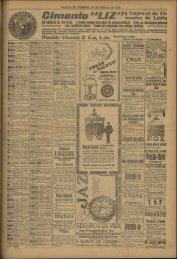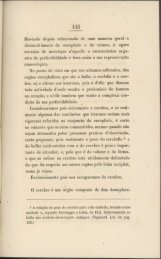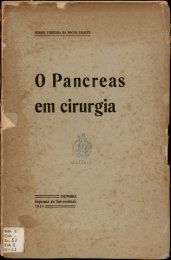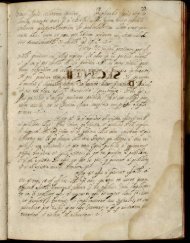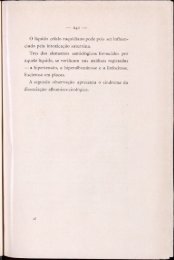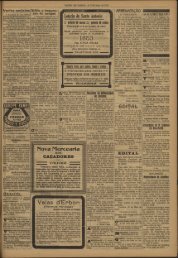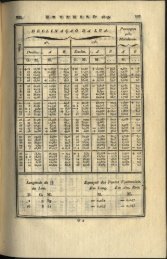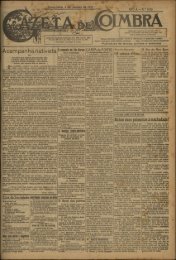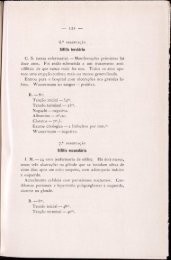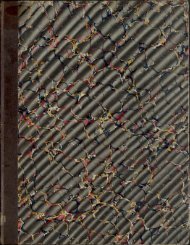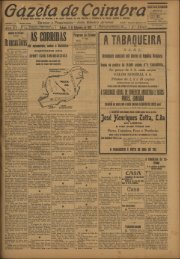The Lyric Metres of Euripidean Drama - Universidade de Coimbra
The Lyric Metres of Euripidean Drama - Universidade de Coimbra
The Lyric Metres of Euripidean Drama - Universidade de Coimbra
You also want an ePaper? Increase the reach of your titles
YUMPU automatically turns print PDFs into web optimized ePapers that Google loves.
Part I - Euripi<strong>de</strong>s’ use <strong>of</strong> lyric metre<br />
(i) dactylic to iambic: Andr. 294~ 302, Hel. 1485~1502 66 .<br />
(ii) iambic to dactylic: Tr. 1093~1111, Ph. 1561, IA 1492 (2 ia | lk | D? || B ).<br />
(iii) trochaic to dactylic: Ph. 1569, Cycl. 609.<br />
(iv) dactylic to trochaic: Cycl. 612.<br />
(v) iambic to choriambic: Alc. 267.<br />
(vi) iambic to dochmiac: Tr. 1227 (ia | lk | hδ||), Or. 1361~1545 (3 ia |<br />
lk | δ ||).<br />
(vii) enoplian to iambic: Ph. 147 (enop prm | lk | 3 ia).<br />
Sometimes Euripi<strong>de</strong>s uses it in<strong>de</strong>pen<strong>de</strong>ntly, almost as an autonomous, not<br />
specifically iambo-trochaic, colon: at Hi. 67 and El. 153 it appears sandwiched<br />
between two glyconics (cf. Hi. 530-4~540-4, where Barrett analyses ph + lk ||<br />
hept + lk | reiz |||); 67 at Andr. 136~142, between a dactylic hexameter and a<br />
hemiepes; at Ph. 1288~1300, a fully resolved lecythion is found between two<br />
dochmiacs. Other unusual sequences featuring lecythia are Hi. 1148-50 (D ∪<br />
D — | lk | ar |||), 1385a-6 (2 ba ∫ dod | lk ||), Ion 1476 (2 δ | an | lk ||). In<br />
the teichoscopia duet in Phoenissae, it is used twice as a transitional phrase to<br />
effect a change from enoplian to dactylo-epitrite: cf. 119-121-2 (∪ D | lk | —<br />
e ∪ D sp) and 128-130 (enop | lk | ∪ e ∪ D sp); here the lecythion sounds an<br />
ambiguous note by lending the epitritic phrase x — ∪ — x a seemingly iambic<br />
lilt. Cf. also Rh. 459~825 where a lecythion forms the link in the sequence<br />
‘cyren || H lk | — D — e chol ’.<br />
<strong>The</strong>re are twelve different shapes <strong>of</strong> lecythion in Euripi<strong>de</strong>s (since the<br />
lecythion is properly an iambo-trochaic colon, there seems little point in<br />
listing ‘iambic’ and ‘trochaic’ lecythia separately; but I add a superscript ‘tr’<br />
to the unambiguously trochaic instances); although resolution is common, 68 a<br />
fully resolved lecythion is something <strong>of</strong> a rarity (cf. Parker 1997: 390):<br />
— ∪ — ∪ — ∪ — : Alc. 214b, 267, Hi. 67, Andr. 136~142, 276~286,<br />
294~302, 1209~1222, 1210~1223, Hec. 706, Su. 780~788, 784~792,<br />
799~812, 1128~1135, El. 1195, 1222~1228, Herc. 132a tr , 134 tr ,<br />
386~400, 431, Tr. 830, IT 867, Hel. 168 tr , Ph. 129, 147, 317, 338b,<br />
1038b~1062b tr , 1720 tr , 1740, 1741, Or. 969~980, 997, †1004a†?,<br />
1370 (?), 1372, 1402a, 1408, 1457a, 1460, Ba. 588 tr , 593 tr , IA<br />
232~243, 236, 240~251, 257~269, 259~271, 260~272, 261~273,<br />
276, 278, 280, 296, 298, 299, 1476, 1481, 1482, 1506, 1511, 1520,<br />
1521, Rh. 459~825, Cycl. 609, 612, Teleph. II. 5.<br />
66 With Diggle’s suggestion for Hel. 1484~1501 (ποιμένοc, ἄβροχ’ ὃc ~ γλαυκὸν ἐπ’ οἶδμ’<br />
ἁλὸc: dod) we would have a lecythion used as a transition from aeolic to iambic.<br />
67 For a lecythion in an aeolic context, cf. also Teleph. II. 5 and Cresph. III 9 (with Diggle’s<br />
supplement ἴθι μοι, πότνια, πόλιν, accepted by Kannicht); cf. Diggle (1994: 388 n. 86).<br />
68 Diggle (1994: 389 n. 86) gives a list <strong>of</strong> lecythia with resolution in the penultimate long<br />
(add Andr. 484~492, Su. 366~370, 623~631, Hel. 178, 1485, Ph. 1567b, 1569, Ba. 578, 584, 589).<br />
42



